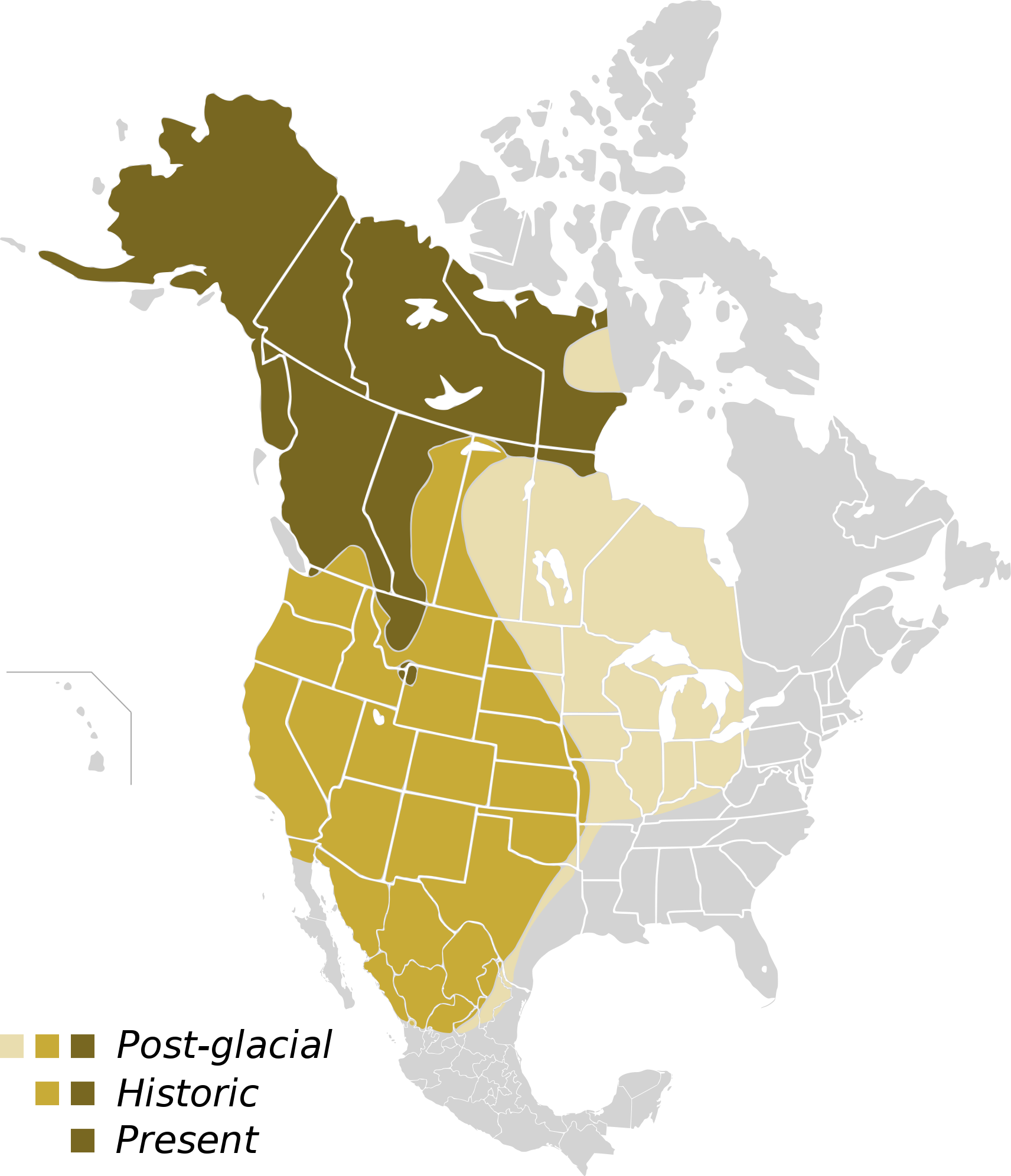Greater Yellowstone Ecosystem Grizzly Bear
by: Charlotte Rubel
physical characteristics:
Grizzly Bears are a lot larger than black bears and can be distinguished by longer, curved paws, humped shoulders and a face that appears to go inward. The coloration of grizzly bears is a wide range between light brown to nearly black. Spring shedding, new growth, nutrition and climate, all affect the color of the grizzly. The muscle structure of the grizzly bear is made for strength and quickness. Also grizzly bears are known to have a very long life.
habitat:
Grizzly bears excavate dens when they go into hibernation. They start making the dens as early as September or even late November. The bears usually make the dens on steep slopes where wind and topography cause and accumulation of deep snow and where the snow is unlikely to melt during warm periods. They find an isolated area where they are covered with a blanket of snow to minimize the escape of body-warmed air.
Distribution:
Distribution:
Today, with the western United States inhabited by millions of Americans, only a few small corners of grizzly country remain, supporting about 1,200 – 1,400 wild grizzly bears. Of 37 grizzly populations present in 1922, 31 were extirpated by 1975.In 1975, the U.S. Fish and Wildlife Service listed the grizzly bear as a threatened species in the Lower 48 States under the Endangered Species Act, placing the species under federal protection. Today, grizzly bear distribution is primarily within but not limited to the areas identified as “Recovery Ecosystems”.

Threats:
The number one threat to the grizzly bear populations are deaths caused by humans. In an increasingly developed world, bears often cross through private lands in search of food and secure habitat. Attractants such as bee yards, garbage, fruit trees, chicken coops, livestock and bird feeders often lure bears close to homes and habituate them, or help them become used to human activity. Bears that become used to living and feeding near human activity may be deemed a threat and then killed by wildlife officials or the private landowner. Often, these situations are avoidable.
Recovery plan:
In the ecosystems currently inhabited by bears, recovery efforts have included reducing the potential for human-bear encounters and related bear mortality, and providing secure habitat for females to raise their young. Recovery activities include public education, reduction in bear access to human food and garbage, evaluation of road densities, research on availability of grizzly foods, and other study of bears and their habitat. Using the best currently available scientific data, an IGBC subcommittee for each ecosystems focuses on specific actions, with the goal of ensuring adequate numbers of bears and suitable habitat for sustaining recovered populations.
"The first Grizzly Bear Recovery Plan was developed by 1982. In 1983 the Interagency Grizzly Bear Committee (IGBC) was formed -- with members from the National Park Service; U.S. Fish and Wildlife Service; USDA Forest Service; the states of Idaho, Montana, Washington, and Wyoming; and British Columbia -- to recover grizzly bears."
How can you help?
I think by putting more awareness on grizzly bears within your own community can help tremendously. If only person from every community creates awareness within the town, many more people will try and help save them. It is the people that are ruining grizzly bears and their chance to live. We are building on their homes and causing them to have to move to other places where they are not welcomed. It only takes one person to help bring awareness.
I think by putting more awareness on grizzly bears within your own community can help tremendously. If only person from every community creates awareness within the town, many more people will try and help save them. It is the people that are ruining grizzly bears and their chance to live. We are building on their homes and causing them to have to move to other places where they are not welcomed. It only takes one person to help bring awareness.
To learn more about grizzly bears, click on the links below:
https://www.nps.gov/yell/learn/nature/bearesa.htm
http://www.edu.pe.ca/southernkings/grizzly.htm
http://www.defenders.org/grizzly-bear/threats
references:
U.S. Fish and Wildlife Service. "Current Status of Thereatened Grizzly Bear Populations and Their Recovery." IGBC Online. N.p., n.d. Web.
Servheen, Christopher, Dr. "Grizzly Bear Recovery Plan." ECOS. U.S. Fish and Wildlife Service, n.d. Web.
"Threats to Grizzly Bears." Defenders. Defenders of Grizzly Bears, n.d. Web.
https://www.nps.gov/yell/learn/nature/bearesa.htm
http://www.edu.pe.ca/southernkings/grizzly.htm
http://www.defenders.org/grizzly-bear/threats
references:
U.S. Fish and Wildlife Service. "Current Status of Thereatened Grizzly Bear Populations and Their Recovery." IGBC Online. N.p., n.d. Web.
Servheen, Christopher, Dr. "Grizzly Bear Recovery Plan." ECOS. U.S. Fish and Wildlife Service, n.d. Web.
"Threats to Grizzly Bears." Defenders. Defenders of Grizzly Bears, n.d. Web.



I really enjoyed your use of maps and pictures. It gave context to your information. The color coordinated map was very easy for the reader to understand.
ReplyDeleteI thought this was a very informative and nicely structured post. It has a nice balance of information and graphics. I also agree with your thoughts on how people can help. It is very important to spread awareness. - Kyle Rosenthal
ReplyDelete